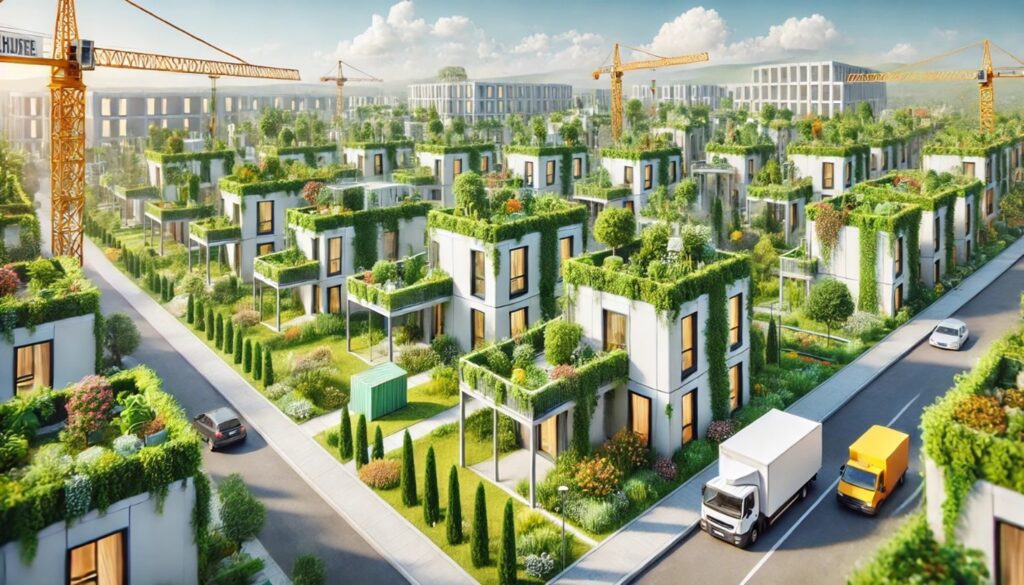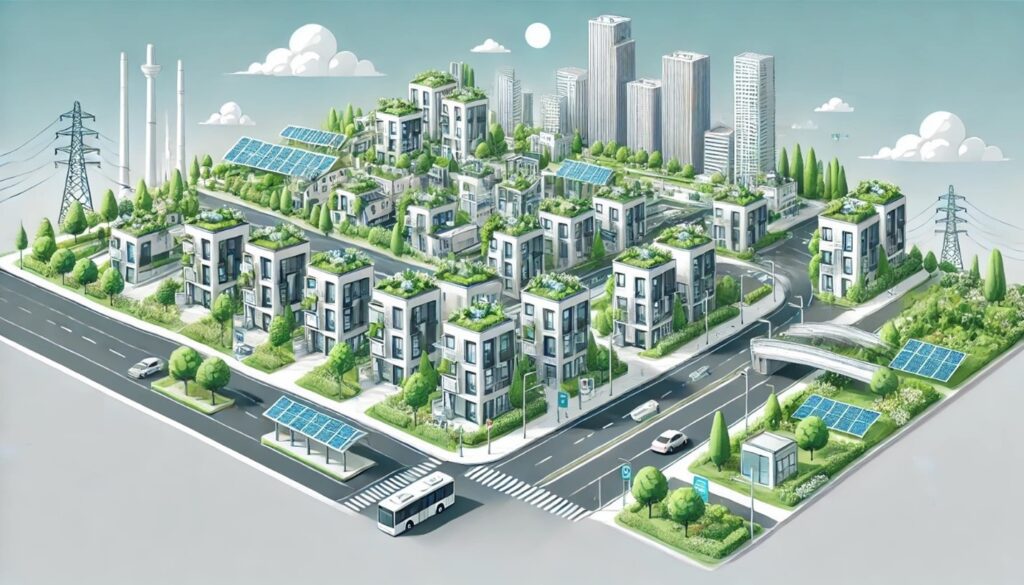Introduction
The construction industry is at a transformative crossroads, where traditional methods are being reshaped by digital tools and modular techniques. Today, more than ever, there is a demand for faster, smarter, and more sustainable building practices. As traditional methods give way to new approaches like modular construction and productization, platforms like CATIA by Dassault Systèmes play a pivotal role in reshaping the construction landscape.
CATIA enables architects, engineers, and construction firms to collaborate seamlessly, optimize designs, and ultimately bring a higher level of efficiency and innovation to every project. Here, we’ll dive into the powerful ways CATIA drives these advancements and how it empowers teams to build a more resilient, sustainable future.
1. Productization in Construction: A Manufacturing Approach to Building
What is Productization?
Productization involves taking a manufacturing-style approach to construction by transforming building elements into repeatable, standardized products. Think of it as creating building components on an assembly line, where consistency, quality, and scalability are prioritized. With CATIA, construction firms can harness this concept, enabling faster, more cost-effective builds with less waste. This approach is helping companies shift from traditional, labor-intensive construction methods toward a more efficient and replicable model.
Key Benefits of Productization with CATIA
- Scalability and Efficiency: CATIA’s 3D modeling capabilities allow design teams to create and test standardized modules. These modules can be repeated, modified, or scaled up depending on the project’s needs. For instance, if a housing developer is working on a residential complex, CATIA enables them to design a standard apartment unit once, then scale it to hundreds or even thousands of units without starting from scratch each time.
- Improved Quality Control: In traditional construction, quality control can be challenging, as every stage involves different teams working in diverse environments. CATIA’s digital tools help centralize the design and production phases, allowing for more consistent, predictable results. By managing every component within the software, firms can reduce errors, ensuring that each part meets the same quality standards.
- Cost and Time Savings: Productization also helps firms avoid costly project delays and streamline the building process. Because parts are prefabricated in a controlled environment, construction timelines are reduced, and on-site labor requirements are minimized. According to industry research, modular construction can cut project schedules by 20-50%, with CATIA helping to bring those timelines down even further through precise planning and coordination.
Real-World Applications of Productization
A compelling example of productization is the application of modular components in building essential infrastructure, such as hospitals, schools, and housing. These projects require swift deployment, especially in underserved or disaster-prone areas. CATIA enables teams to produce modules for such projects efficiently, meeting demand while ensuring safety and quality.
2. Modular Construction: Building Blocks for Sustainable Cities
Why Modular Construction Matters
Modular construction is one of the most impactful shifts in modern construction. It involves creating building components or modules off-site, then transporting and assembling them at the project site. This method not only saves time but also reduces the environmental footprint, making it a preferred approach for sustainable development. By using CATIA’s collaborative features, construction teams can adopt a truly modular mindset—designing for flexibility and adaptability from the start.
CATIA as a Catalyst for Modular Construction
- Real-Time Collaboration Across Teams: CATIA brings together architects, engineers, and contractors on a single digital platform, allowing them to work together in real time. This collaboration is crucial for modular construction, where each module must align perfectly with others. CATIA’s collaborative workspace ensures that everyone has the latest design versions and can track updates, reducing the risk of costly reworks.
- Customizable and Adaptable Designs: While modular construction emphasizes standardization, flexibility is equally important. CATIA supports customization, enabling teams to create modules that can be adapted to different climates, geographies, and aesthetic preferences. This adaptability makes modular construction ideal for urban and rural development projects, where local needs may vary significantly.
- Environmentally Friendly and Sustainable: With CATIA, teams can optimize material usage, minimize waste, and design for disassembly, a concept where components can be taken apart and reused at the end of the building’s life. This approach supports a circular economy, where materials are kept in use rather than discarded, helping construction firms meet sustainability goals.
3. Driving Innovation with CATIA’s Advanced Design Solutions
The Role of 3D Modeling and Simulation in Construction
CATIA’s 3D modeling and simulation capabilities allow construction teams to test and validate designs before any physical construction begins. This approach reduces risks, as potential issues can be identified and resolved during the design phase. Through simulations, engineers can assess a structure’s durability, thermal performance, and energy efficiency, ensuring that the final building will perform as intended under various conditions.
Documentation and Compliance Made Simple
Construction projects require extensive documentation to meet regulatory and safety standards. CATIA simplifies the documentation process by centralizing all project information, ensuring that it’s easily accessible for compliance checks. Automated documentation features allow teams to focus more on design and innovation, with CATIA handling the complexities of paperwork and reporting. This capability is especially beneficial for large, multi-national projects, where regulatory requirements may vary across regions.
Integration with the 3DEXPERIENCE Platform
As part of the 3DEXPERIENCE platform, CATIA offers seamless data sharing across disciplines. This integration ensures that data flows smoothly from design through construction, minimizing errors and fostering collaboration between architects, engineers, and contractors. The 3DEXPERIENCE platform also supports project management and lifecycle tracking, helping construction firms keep projects on schedule and within budget.
4. Creating Resilient and Adaptive Environments
Smart Cities and Infrastructure Development
CATIA’s integrated tools empower architects and engineers to design for the future, supporting resilient structures that can adapt to changing needs. As cities grow and evolve, construction must focus on flexibility, sustainability, and resilience. CATIA supports these goals by offering design tools that account for long-term environmental impacts, energy efficiency, and potential expansions.
Building for the Next Generation
In an era marked by rapid urbanization, CATIA helps address the growing demand for adaptable housing, efficient transportation systems, and sustainable urban spaces. The platform allows construction firms to anticipate future needs, ensuring that their projects contribute to resilient, smart cities. By making data-driven decisions and creating structures that can evolve, CATIA supports sustainable growth.
Example Project: Sustainable Housing
A project example might involve creating adaptable, eco-friendly housing units for urban environments. Using CATIA, designers can create modular units optimized for natural light, energy efficiency, and airflow. These units can be stacked or rearranged as city populations shift, offering a sustainable solution to urban housing challenges.
Conclusion
The construction industry is embracing a new era of efficiency and innovation, with CATIA leading the way. By enabling productization, modular construction, and a focus on resilience, CATIA transforms how we design, plan, and build. As CATIA continues to evolve, the future of construction looks promising—a future where buildings are not only stronger and smarter but also more adaptable to the communities they serve.
Contact our dedicated teams today to get started on your next 3D project!

